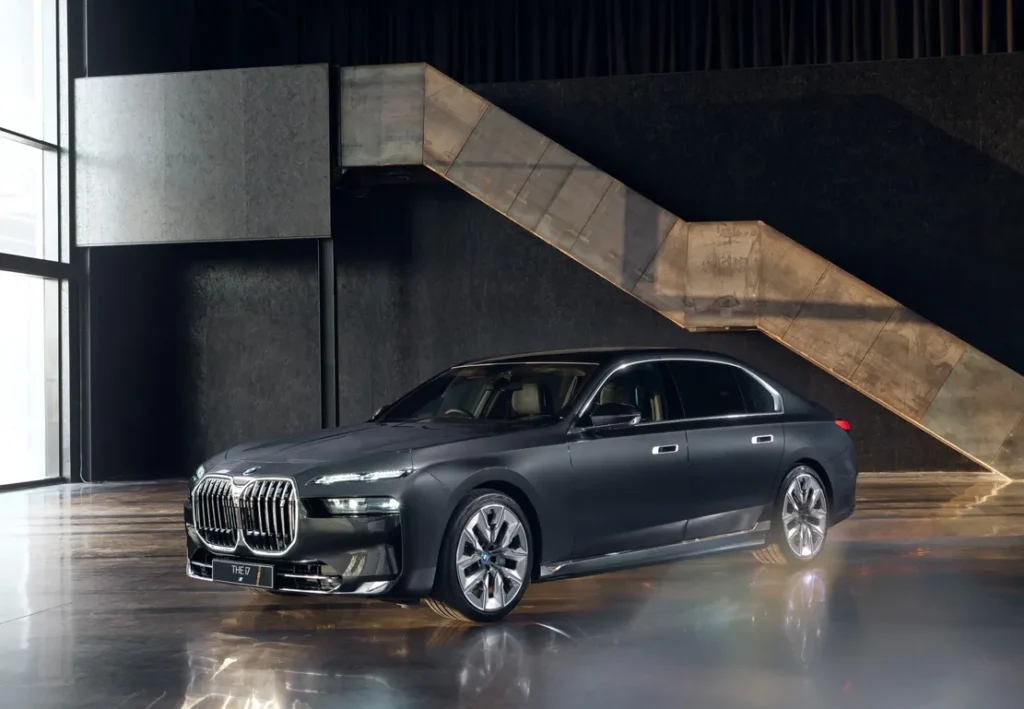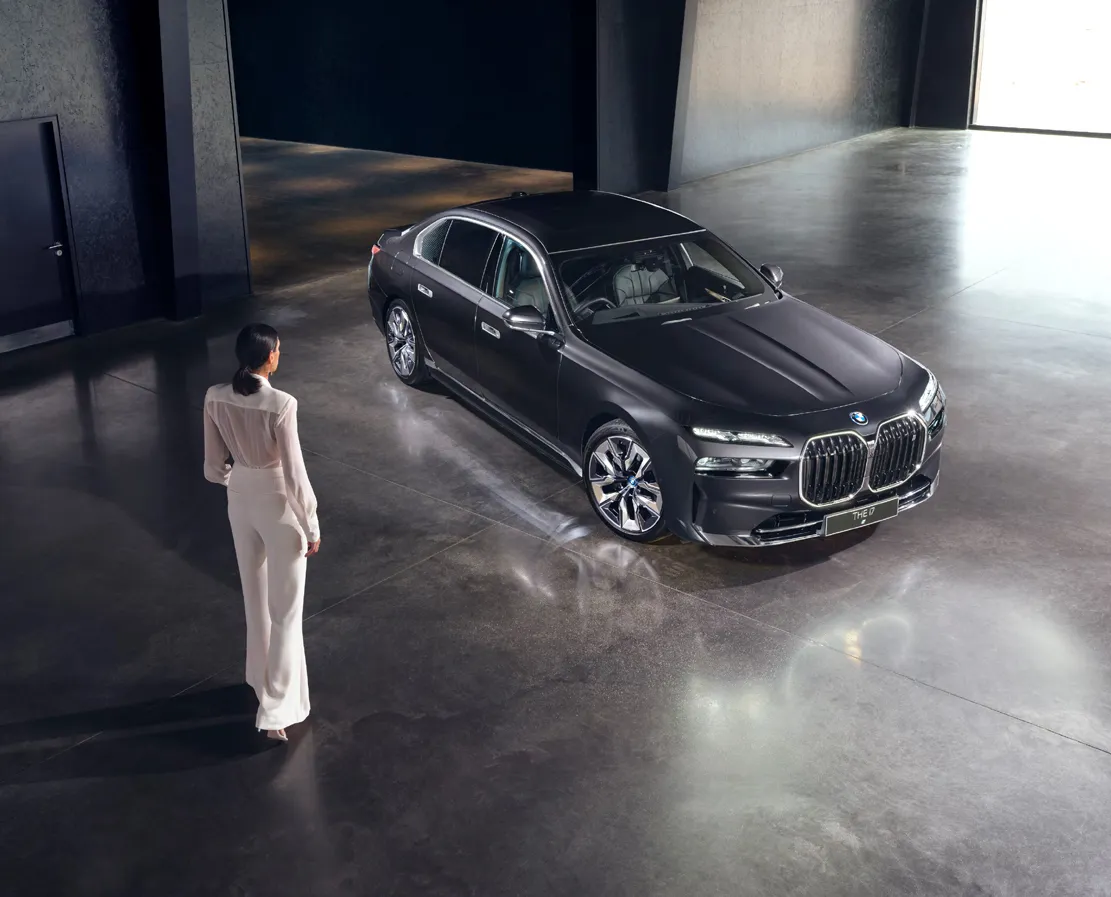
The BMW i7 & The Women Who Made It
Combining luxury with serious advances in electrification, the new BMW i7 has been hailed as the marque’s masterpiece. For the team of women who created it, it signifies a moment of revolution behind the scenes too.
Source: Vogue UK
BMW UK are proud to partner with British Vogue on the Forces for Change Initiative for a fourth year. Forces for Change celebrates the people, organisations, and ideas that are pushing for a more progressive future. See below for content from the partnership as well as from BMW that explores not only the changemakers of today but also a brighter tomorrow.
It’s no secret that the automotive industry lacks gender diversity and that the electrification of cars is still seen as futuristic by many. At BMW, which has been championing equal opportunity and electric vehicle development for decades, this is the norm. With the unveiling of the BMW i7 – the new all-electric version of the 7 Series and most revolutionary electric model in the company’s arsenal – the world is shown what is possible when expertise is diversified.
Visual luxury, visual technology and a visual statement.
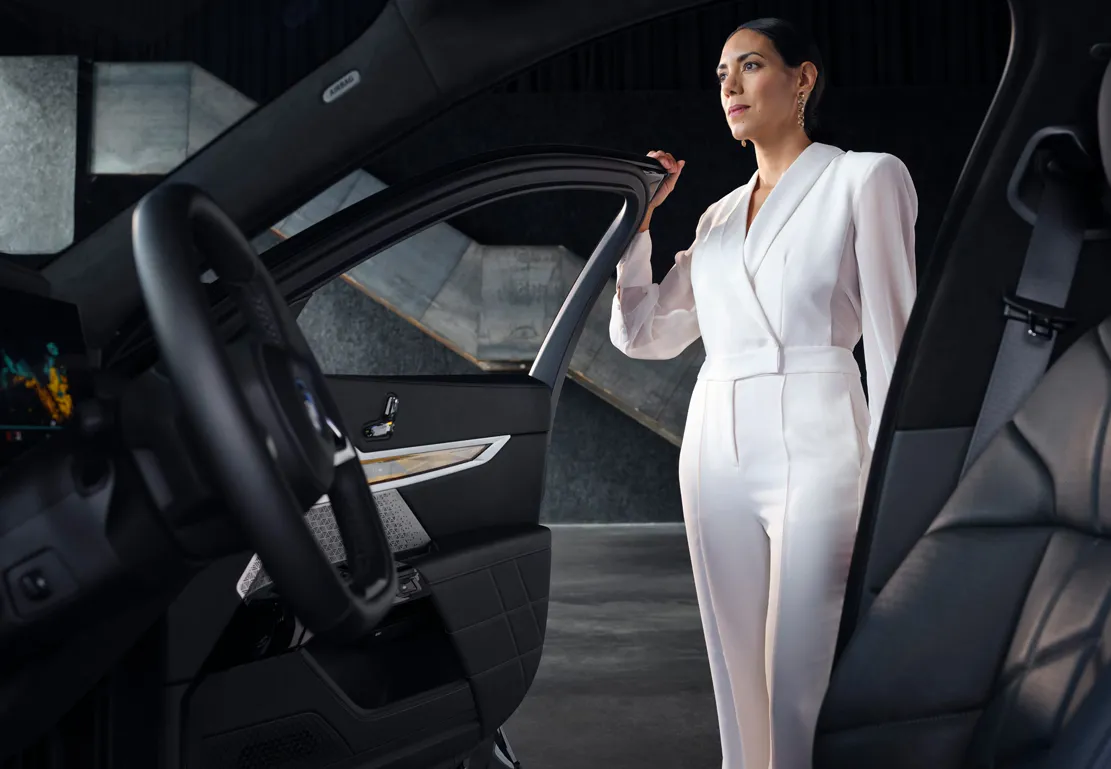
Carina Gärtner
Combining luxury and electric performance, the i7 is, in many ways, a culmination for the marque – of its expertise, its innovation and its reputation as a leader in driver experience – and has been hailed by the team behind it as the “masterpiece of BMW”. With its illuminated Iconic Glow kidney grille and the Crystal headlights with dynamic sparkling, plus offering a cinematic experience on optional 31.3in Theatre Screen in the rear passenger compartment and an all-new Parking Assistant Pro, which steers into and out of parking spaces automatically, it’s easy to see why.
Bringing electric technology to the company’s premium luxury saloon, the i7 is this year’s answer to the equally elegant iX of 2021, offering, for the first time in the electric vehicle space, a model that delivers on splendour as much as it does on tech – something that further solidifies BMW’s place as a disruptor in the field.
To create a fully electric model that didn’t compromise on comfort was a primary driving force for Carina Gärtner, Annette Baumeister and Daniela Kern, who were all integral to the design and development of the i7. Given that the 7 Series has long been considered the marque’s flagship model – an emblem of the elegance and power it is known for – ensuring the i7 continued to deliver such high standards while also pushing the electric capabilities further than any car before, was more than a hopeful prospect. It was a necessity.
It is able to complete a trip of up to 387 miles, while still delivering the kind of power expected in a combustion engine. The strong torque allows for an acceleration that can take the car from zero to 62 miles per hour in 4.7 seconds, while the new emergency braking functionalities are also highly responsive.
“We asked ourselves, What functionalities do we need to offer the customer? How should they work and how should they interact with the driver?” says Kern, who is head of functional design and integration automated driving (which means to ensure the car is roadworthy). “For the i7, we’ve [been able to] launch some really outstanding ones.”
Her favourite of these are the remote parking and the all-new Highway Assistant, which will be available to the US market and will allow the driver to lean back and let the car drive. “You do not have to steer; you do not have to brake; you only have to observe the traffic. It just cruises you over the highway.”
Crowning jewels like these are what will draw steadfast combustion engine customers into the future and it was through a deep understanding of their 7 Series clientele that the team were able to create a menu of features that would appeal.
“These customers love the effects,” explains Gärtner, head of product management, the 7, “so at the beginning of development we integrated customer expectations in a deeper way than we did for other cars.”
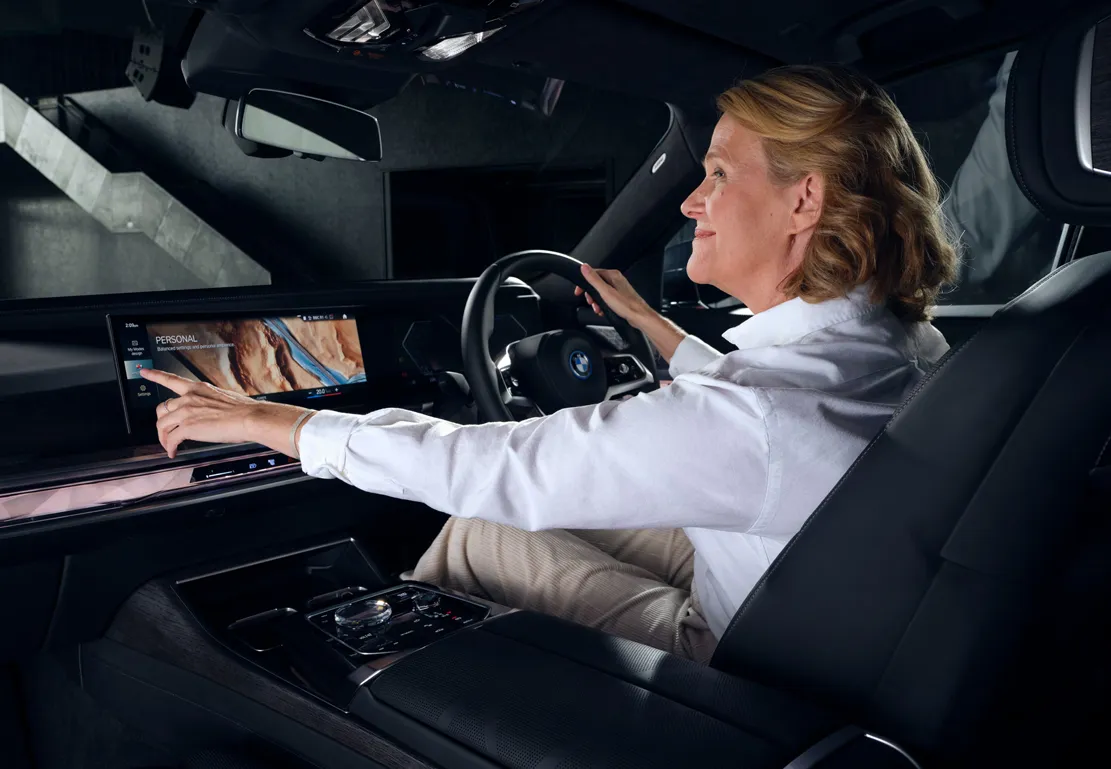
Annette Baumeister
The team has spent ample time ruminating on these expectations and, over time, have encapsulated them into what they term the three Vs: “visual luxury, visual technology and a visual statement”.
Incidentally, appealing visuals are not difficult to come by with the i7, which is a feast for the eyes, both inside and out. As head of colour and material, Baumeister led the way on this, bringing together geometry and colour to create both an impactful first look and an experience that lasts throughout the drive.
On the exterior, the crystal-enhanced lighting accentuates the kidney-shaped grill and Hofmeister kink, both something of a calling card for the brand, giving the car a feeling Baumeister describes as “monolithic”. The interior is also brought into a league of its own with a range of digital and physical highlights. For the driver, these include a 14.9in Curved Display and Interaction Bar that extends horizontally across the entire cockpit, while backseat passengers can enjoy a 31.3in Theatre Screen and reclining seats adorned with a leather and cashmere blend. The overall feel is that of a first-class air cabin – spacious, elegant and utterly comfortable.
“We all know it’s important to have the right touch when it comes to digital,” Baumeister remarks, on getting the experiential balance right. “It has to be light and in motion. But with materials, the analogue touch is also important. It’s all about the balance, in the end, [and] the materials which create the character.”
And it’s this that BMW truly prides itself on: character. That of both the car and the driver. “‘I think the i7 has a huge bandwidth,” observes Baumeister. “You can create something really bold [or] something super sporty. Sometimes you have the feeling you have a totally different car due to what we do with colours and materials.”
In the i7, this has manifested in a range of colour, trim and upholstery options. A buffet of interior “atmospheres” are offered in the My Modes technology, which utilises light, climate optimisation and sound (composed by Hans Zimmer, no less) to give the driver a truly personalised experience. Because, as BMW has shared before, more so than any other demographic factor, “It is character that makes the driver” – much as it is character that makes the team behind the i7 too.
As typical as it should be, the fact that the lead creators of this car – as well as the creators of this piece (including long-time gender equity journalist Bianca Barratt and Lisa Linke, an award-winning automotive photographer and director) – are women, is not.
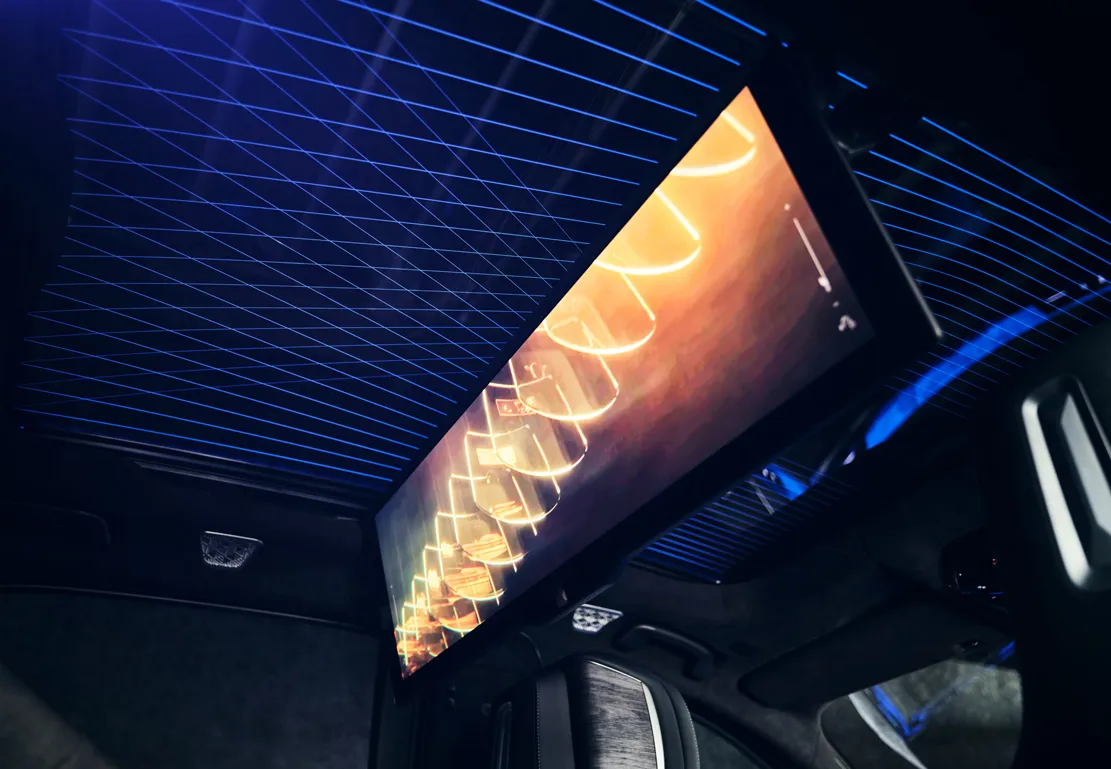
The 31.3in Theatre Screen
Several sources put the representation of women across automotives at roughly 20 per cent, meaning it remains one of the least gender-diverse industries on record. At the BMW Group, however, 47 per cent of its trainee programme are women, proving both how serious the brand is about creating an inclusive future as well as its instinctual understanding that the more diverse the team behind it, the more intuitive, adaptive and just plain good the car experience is for the driver.
“BMW doesn’t focus on gender, but rather on the profiles of drivers,” explains Baumeister. “There’s no differentiation. The two target audiences are [simply] ‘expressive performers’ and ‘elegant creatives.’”
This is reiterated by Kern, who joined BMW after witnessing how much her father loved working for the company. “The key to a good product for every customer is to have teams that include different ages, different cultures and different genders. The cooperation [and] conversations are simply better.”
This way of thinking – to be inclusive to all, both behind the scenes and on the road – spells a bright forecast for the marque, proving that it’s not just the innovative electrification of BMW that will secure its place as a leader of the automotive future, but the driving force behind it too.
